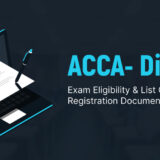
A. Background:
In recent times, many companies have chosen to raise money by issuing convertible instruments. A convertible instrument is a hybrid instrument that offers investors the option to redeem the security for cash at the end of (or during) its term or convert it to equity shares of the entity. Convertible instruments generally offer lower interest rates (because of the additional consideration by way of conversion option) than comparable conventional instruments, making them a cost-effective way for the entity to raise money. Convertible instruments are typically issued by companies that have high growth expectations and relatively lower credit ratings. The companies get access to money for expansion at a lower cost than they would have to pay for conventional instruments. Investors, in turn, get the flexibility of turning their convertible instruments into cash or equity shares of the entity. Examples of convertible instruments are optionally convertible preference shares, optionally convertible debentures / bonds, etc.
Under the Ind AS framework, Ind AS 32 – Financial instruments: Presentation (Ind AS 32), requires an issuer entity to present an issued instrument either as an equity or a financial liability depending on the features of that instrument. Equity instruments are instruments that evidence a residual interest in the assets of an entity after deducting all of its liabilities. Thus, instruments for which the entity has no obligation to deliver cash or can settle it by issuing fixed number of its own equity instruments are considered as “equity” instruments. Otherwise, when the entity has contractual obligation to deliver cash or another financial asset, or to deliver a variable number of the entity’s own equity instruments, the instruments are generally classified as “financial liabilities”.
An issued instrument may contain features of both financial liability (e.g. an obligation to deliver cash, either towards interest or principal sum) and an equity (e.g. no obligation to deliver cash at all or option to convert the liability into entity’s fixed number of equity shares). Such an instrument is termed as a ‘compound financial instrument’.
As per Ind AS 32, the issuer of such compound financial instrument is required to present the liability component and the equity component separately in the balance sheet. This is commonly referred to as “split accounting”.
B. Accounting Issue:
How to account for and present a compound financial instrument under Ind AS in the books of an issuer on initial recognition and on subsequent reporting dates?
As part of this blog, we will try to evaluate how to separate the components of a compound financial instrument on initial recognition and on its subsequent reporting dates.
C. Relevant technical guidance under Ind AS
Ind AS 32 – Financial Instruments: Presentation
Para 28
The issuer of a non-derivative financial instrument shall evaluate the terms of the financial instrument to determine whether it contains both a liability and an equity component. Such components shall be classified separately as financial liabilities, financial assets or equity instruments.
Para 29
An entity recognises separately the components of a financial instrument that:
• creates a financial liability of the entity and
• grants an option to the holder of the instrument to convert it into an equity instrument of the entity.
For example, a bond or similar instrument convertible by the holder into a fixed number of ordinary shares of the entity is a compound financial instrument. From the perspective of the entity, such an instrument comprises two components: a financial liability (a contractual arrangement to deliver cash or another financial asset) and an equity instrument (a call option granting the holder the right, for a specified period of time, to convert it into a fixed number of ordinary shares of the entity). The economic effect of issuing such an instrument is substantially the same as issuing simultaneously a debt instrument with an early settlement provision and warrants to purchase ordinary shares or issuing a debt instrument with detachable share purchase warrants. Accordingly, in all cases, the entity presents the liability and equity components separately in its statement of financial position.
Para 31 (Application Guidance)
A common form of compound financial instrument is a debt instrument with an embedded conversion option, such as a bond convertible into ordinary shares of the issuer, and without any other embedded derivative features. Paragraph 28 requires the issuer of such a financial instrument to present the liability component and the equity component separately in the balance sheet, as follows:
(a) The issuer’s obligation to make scheduled payments of interest and principal is a financial liability that exists as long as the instrument is not converted. On initial recognition, the fair value of the liability component is the present value of the contractually determined stream of future cash flows discounted at the rate of interest applied at that time by the market to instruments of comparable credit status and providing substantially the same cash flows, on the same terms, but without the conversion option.
(b) The equity instrument is an embedded option to convert the liability into equity of the issuer. The fair value of the option comprises its time value and its intrinsic value, if any. This option has value on initial recognition even when it is out of the money.
Para 32
The issuer of a bond convertible into ordinary shares first determines the carrying amount of the liability component by measuring the fair value of a similar liability that does not have an associated equity component. The carrying amount of the equity instrument represented by the option to convert the instrument into ordinary shares is then determined by deducting the fair value of the financial liability from the fair value of the compound financial instrument as a whole.
Para 30
Classification of the liability and equity components of a convertible instrument is not revised as a result of a change in the likelihood that a conversion option will be exercised, even when exercise of the option may appear to have become economically advantageous to some holders. Holders may not always act in the way that might be expected because, for example, the tax consequences resulting from conversion may differ among holders. Furthermore, the likelihood of conversion will change from time to time. The entity’s contractual obligation to make future payments remains outstanding until it is extinguished through conversion, maturity of the instrument or some other transaction.
Ind AS 109 – Financial Instruments
Effective interest method-The rate that exactly discounts estimated future cash payments or receipts through the expected life of the financial asset or financial liability to the gross carrying amount of a financial asset or to the amortised cost of a financial liability. When calculating the effective interest rate, an entity shall estimate the expected cash flows by considering all the contractual terms of the financial instrument but shall not consider the expected credit losses. The calculation includes all fees and points paid or received between parties to the contract that are an integral part of the effective interest rate, transaction costs, and all other premiums or discounts. There is a presumption that the cash flows and the expected life of a financial instrument can be estimated reliably. However, in those rare cases when it is not possible to reliably estimate the cash flows or the expected life of a financial instrument, the entity shall use the contractual cash flows over the full contractual term of the financial instrument.
D. Analysis and Conclusion
While accounting for an issued convertible instrument that offers the investors the option to redeem the instrument for cash at the end of (or during) its term or convert it into a fixed number of equity shares of the issuer entity, the issuer entity shall apply the principles of “split accounting” provided above under Ind AS 32 and Ind AS 109 as discussed below.
(a) Presentation and measurement at initial recognition:
At the time of initial recognition, the liability component’s carrying value is determined by discounting the estimated cash flows (interest and principal payments) arising over the expected life of the financial instrument to the present value. When it is not possible to reliably estimate the cash flows or the expected life of a financial instrument, the entity shall use the contractual cash flows over the full contractual term of the financial instrument.
The discount rate shall be the current rate of interest applicable to instruments of comparable credit status and providing substantially the same cash flows on the same terms, but without the equity component (the equity conversion option).
When the terms of the convertible instruments provide an option to convert the instrument into fixed number of equity instruments, the other component in the instrument is considered as equity component. The equity component (the equity conversion option) is assigned the residual amount after deducting the fair value of the liability component from the fair value of the entire instrument.
The sum of the carrying amounts assigned to the liability and equity components on initial recognition is always equal to the consideration received. No gain or loss arises from initially recognising the instrument’s components separately.
(b) Subsequent measurement:
The financial liability will be measured at amortised cost. This means that the liability’s effective rate of interest is charged as a finance cost to the statement of profit or loss over the expected life of the financial instrument (Ind AS 109).
The effective rate of interest is that rate which exactly discounts the estimated future cashflows (including any premiums or discounts) over the expected life of the financial liability to the gross carrying amount of the financial liability. The gross carrying amount of the financial liability will be adjusted for all the fees, transaction costs, and any other incremental costs that are incurred at the time of issuance.
The scheduled interest and principal payments (in cash) are deducted from the carrying value of the financial liability.
The equity component is excluded from the scope of Ind AS 109, and it is not remeasured after initial recognition.
E. Illustration
An entity issues 1,000 convertible debentures with a face value of INR 1,000. The face value of the debentures is also the fair value of the convertible debentures. The debentures bear a rate of interest of 8% per annum. The entire principal is repayable at the end of the tenure in one tranche. The holders of the debentures have the option to convert the outstanding debt into equity shares of the entity at the time of redemption, which is 5 years from the date of issue. The conversion ratio is pre-determined and allows one debenture to be converted into one equity share.
On initial recognition, the entity evaluates the terms and concludes that the instrument contains both a liability and equity component.
Debentures with similar terms but without the equity conversion option bear a rate of interest of 10% in the market. Hence, the entity calculates the fair value of the financial liability as the present value of the interest payments and the principal payment using 10% as the appropriate discount rate. The fair value of the financial liability is valued at INR 9.24 lakhs (PV of Interest CF: INR 3.03 lakhs & PV of Principal CF: INR 6.21 lakhs). The residual value, i.e., the difference between the fair value of the instrument and the fair value of the liability, INR 0.76 lakhs will be recognised as the equity component. The equity component is recognised as a component under the head ‘other equity’ as ‘Equity component in compound FI’.
Subsequently, finance cost of INR 3.03 lakhs will be charged to the statement of profit and loss over the tenure of the debentures using the effective interest method. The annual interest payments of INR 0.80 lakhs and the principal payment at the end of the tenure of INR 10 lakhs will be reduced from the carrying value of the financial liability.
Amortisation schedule using the effective interest method:
| Year | Opening balance | Interest @ 10% | Interest/ Principal repayments | Closing balance |
| 1 | 9,24,184 | 92,418 | (80,000) | 9,36,603 |
| 2 | 9,36,603 | 93,660 | (80,000) | 9,50,263 |
| 3 | 9,50,263 | 95,026 | (80,000) | 9,65,289 |
| 4 | 9,65,289 | 96,529 | (80,000) | 9,81,818 |
| 5 | 9,81,818 | 98,182 | (10,80,000) | – |
At the end of the tenure, entities have the option to transfer the equity component between reserves within equity (from the reserve related to the equity component to share premium or retained earnings as the case may be).
F. Resources
Indian Accounting Standards (Bare Text) as notified under section 133 of the Companies Act 2013.
(https://www.mca.gov.in/content/mca/global/en/acts-rules/ebooks/accounting-standards.html)







